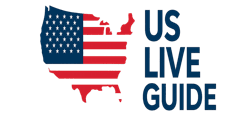Every October, people across the United States and around the world unite to observe Breast Cancer Awareness Month. This campaign is more than just pink ribbons—it’s about education, early detection, prevention, and providing support to those who are fighting breast cancer.
1. Why Breast Cancer Awareness Month Matters
Breast cancer is the most common cancer among women globally, and early detection can dramatically increase survival rates. Breast Cancer Awareness Month helps to:
-
Educate communities about self-exams and screening.
-
Raise funds for research and treatment.
-
Provide emotional and practical support for patients and survivors.
-
Promote public health policies that increase access to mammograms and healthcare services.
2. Risk Factors and Prevention
While breast cancer can affect anyone, certain risk factors increase the chances of developing the disease:
-
Family history and genetics (BRCA1/BRCA2 mutations).
-
Age (risk increases after 40).
-
Lifestyle factors such as poor diet, lack of exercise, smoking, and alcohol consumption.
Prevention and early action include:
-
Regular self-examinations.
-
Annual mammograms for women over 40, or earlier if high-risk.
-
Maintaining a healthy lifestyle through balanced nutrition and exercise.
-
Limiting alcohol consumption and avoiding smoking.
3. Screening and Early Detection
Early detection is critical. According to the American Cancer Society:
-
Women aged 45–54 should get mammograms every year.
-
Women 55 and older can switch to mammograms every two years, or continue yearly screening.
-
High-risk women may need earlier or additional screening such as MRIs.
4. Support for Patients and Families
Breast cancer doesn’t only affect individuals—it impacts entire families. Support includes:
-
Counseling and Support Groups: Emotional support is vital for patients and loved ones.
-
Financial Assistance Programs: Many organizations help cover treatment costs.
-
Workplace Flexibility: Employers can play a role by supporting employees undergoing treatment.
5. Community Involvement and Awareness Campaigns
During October, awareness campaigns take place across the country:
-
Fundraising Walks and Runs (e.g., Race for the Cure).
-
Pink Ribbon Campaigns to symbolize support.
-
Educational Workshops hosted by hospitals, nonprofits, and universities.
-
Corporate Social Responsibility Programs where businesses donate portions of sales to breast cancer research.
6. Looking Ahead
Thanks to research and awareness campaigns, survival rates have improved over the last 30 years. However, continued awareness, funding, and support remain essential. Everyone—from healthcare providers to local communities—plays a role in fighting breast cancer.
